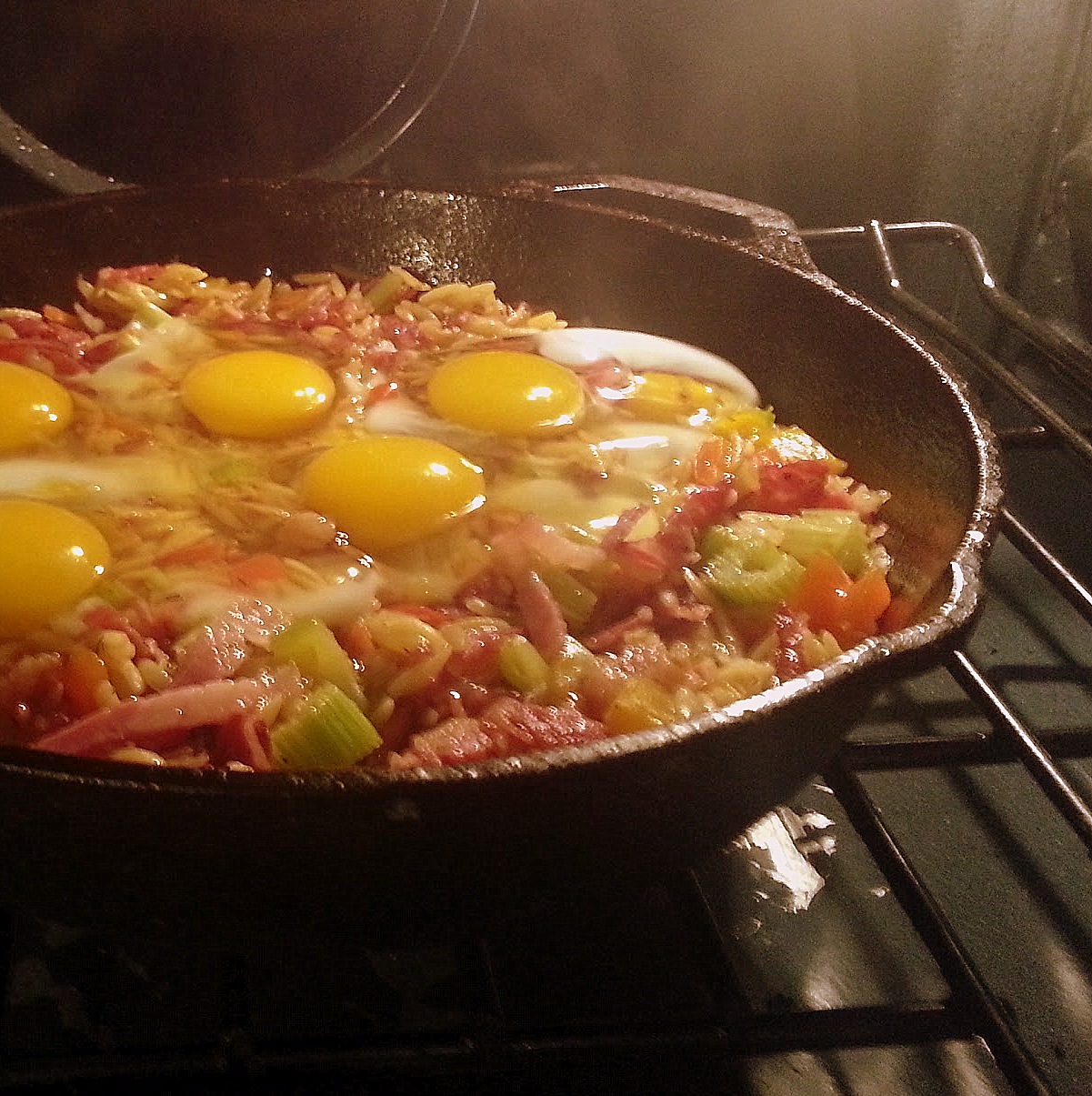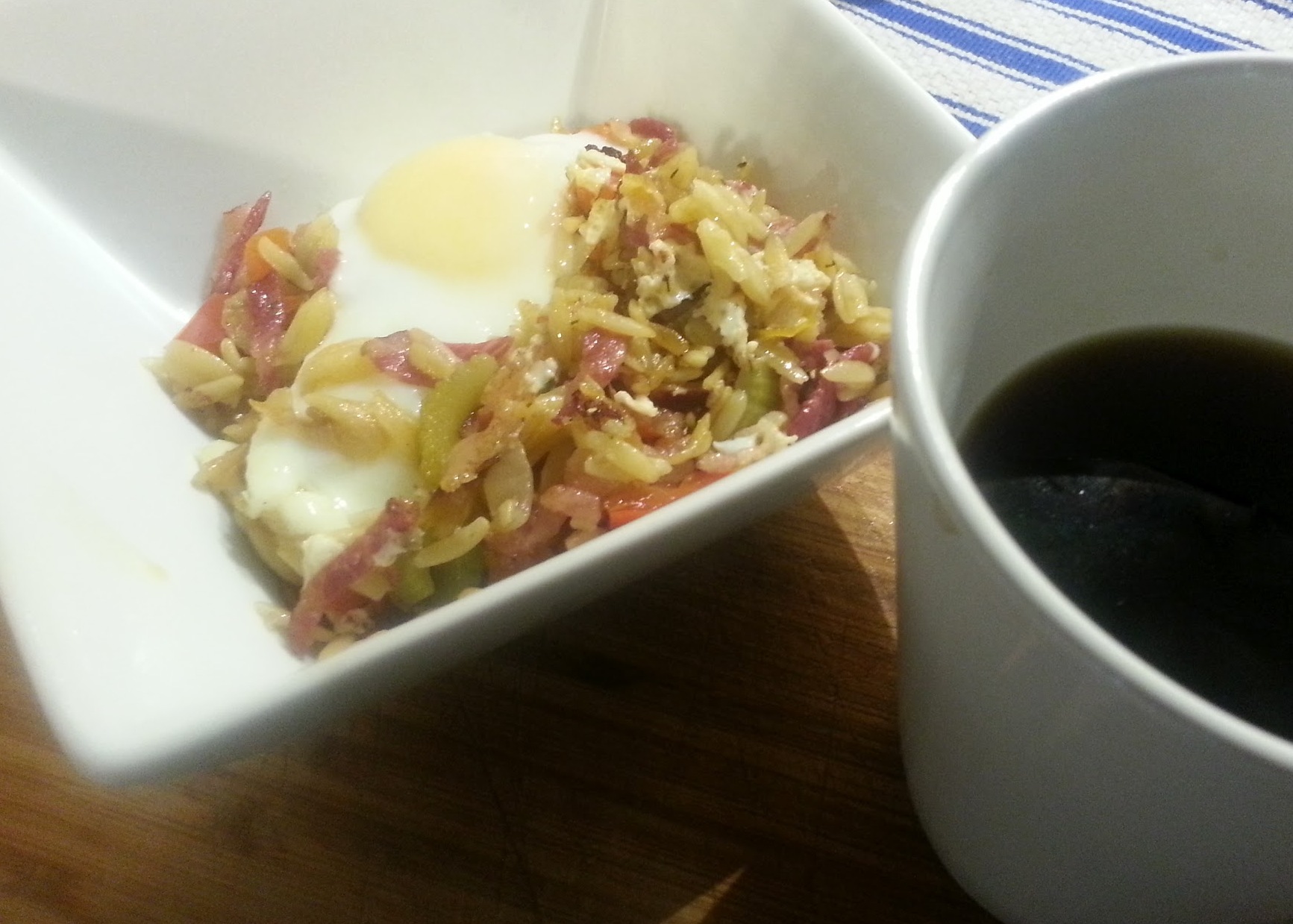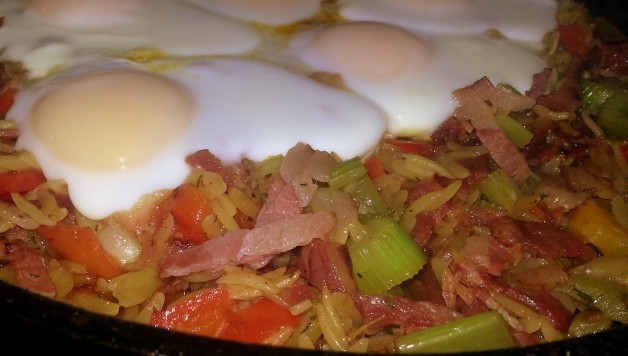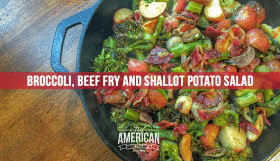Sunday Breakfast: Bibimbap
My relationship with The Food Network has been a funny one. With time, I've come to love "Iron Chef" and "Diner's, Drive in's and Dives", but when the network and I first met, I wanted to spend my day learning from the Ina Garten's and Tyler Florence's of the world. Perhaps it was a brief between-work transition that exposed me to the differences between daytime and nighttime on the Food Network, but without it, I wouldn't be sharing this bibimbap recipe with you today.
What in the world is bibimbap? Well, that was my first thought. Bibimbap is a Korean dish and the word literally means "mixed rice". Typically this dish is served in a hot stone bowl and made with a bed of warm white rice, sautéed veggies and topped with a raw or fried egg. Beef is a common addition, and the dish is usually stirred right before it is eaten.
I didn't have any stone bowls or rice, but the breakfast bibimbap I made for Sunday breakfast a few weeks back was a definite hit. I used leftover orzo instead of rice and crispy beef fry as my meat. I also cooked all the elements together in a cast iron skillet to keep it quick and convenient. I'd happily make a vegetarian version of this dish using tempeh-bacon instead of beef, and I expect the flavors will kick it up to that bacony flavor that America holds do dear.

Breakfast Bibimbap Recipe
You will need the following ingredients:
- Drizzle of olive oil
- 1-2 cups cooked orzo
- 1/2 onion
- 2 sticks of celery
- 1 red pepper
- 1 tomato
- 1 jalapeno pepper (optional)
- 1lb beef fry or tempeh bacon
- Five eggs
Let's get started by drizzling some olive oil in the bottom of a cast iron skillet. While the skillet is warming, dice your celery, pepper and tomato into similar sized chunks then add to the heat. Dice your beef fry or tempeh bacon.
Move the veggies to one side of the skillet and put your bacon directly on the cast iron skillet so it can get nice and crisp! Once it has started to crisp, combine the veggies and the beef fry/tempeh bacon and add the cooked orzo.Mix the ingredients gently so that they can heat evenly and allow the dish to continue to cook for five minutes. Once the dish is warm, make small indentations in the orzo (like you would when making shakshuka) and crack the eggs into the indentations so the whites do not run too far before they begin to set.
I assumed one egg per person, it also didn't cover the entire skillet – I didn't want an "egg lid" to this dish. Whatever you do, keep an eye on the dish from this point on – you will ruin it if you over-cook the eggs. Either cover your skillet with a lid, or put the dish under the broiler to soft-cook the eggs. I managed to perfect this, unfortunately I didn't time this part of the preparation (Lifehacker and The Kitchnseem to know how this is done!).
Now that I have helped you find the perfect coffee, brew one for each of the people dining with you. Don't worry if you don't have stone bowls. If you'd like to create that effect, try heating your bowls in the oven if they are oven-safe. I did not do this – removing this dish even further from a real Korean Bibimbap. Once served, score the yellow of your egg and allow it to dribble through the orzo, veggies and meat. This simple combination of flavors will make or break this dining experience for you. I meant it when I told you not to over cook the eggs!
















